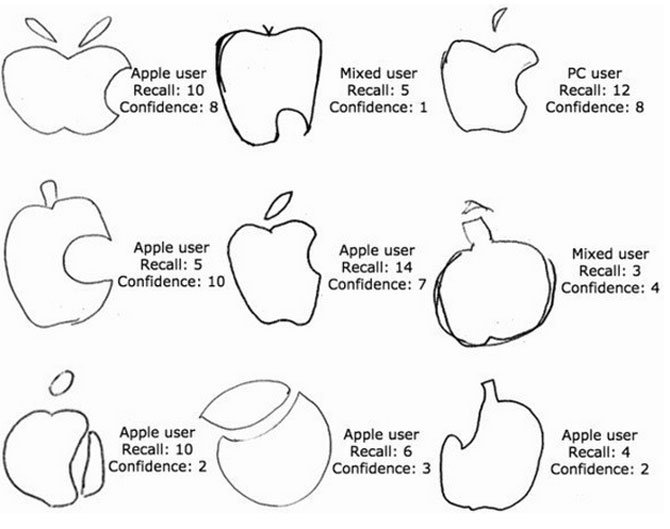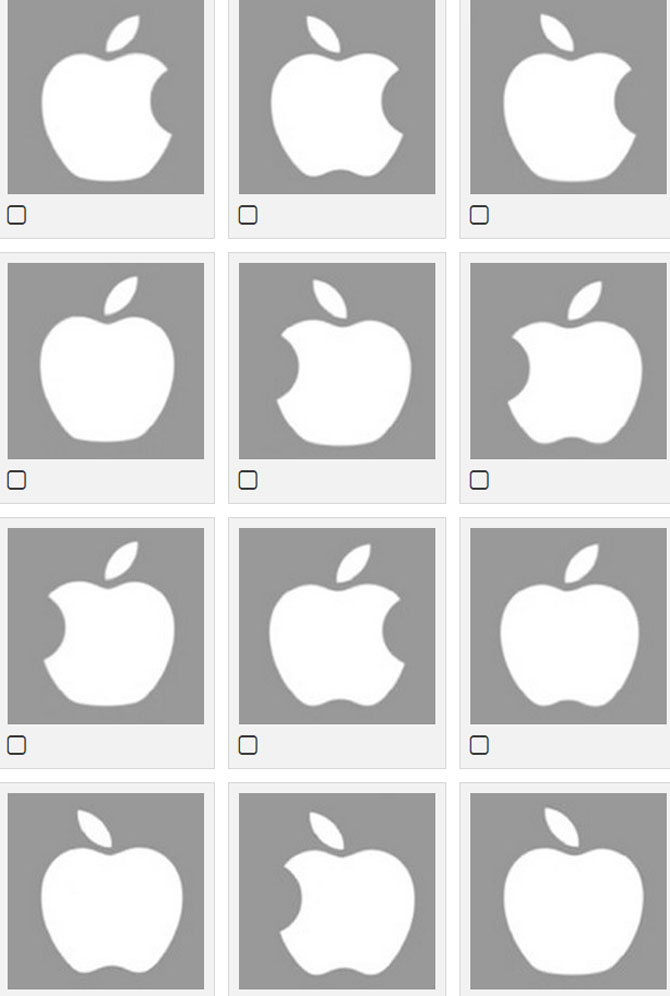Most identify wrong Apple logo. Why?
American scientists have asked 85 people to choose Apple's exact logo from 15 "variants" and as a result more than half of them choose wrong. Do you think you can do better?
>> How is memory stored and retrieved?
Can you identify the Apple logo of Apple?
According to Buzzfeed, more than 85 students participated in the test . This is part of a study conducted by a group of scientists from the University of California (Los Angeles, USA).
Adam Blake, head of research, and colleagues suggested students first draw the Apple logo on their memory (see some of the efforts at the picture below).
 The Apple logo was painted by the recall of Apple users (Apple users), users of both Apple and other devices (Mixed users) as well as confidence (Confidence) of the person drawing the Apple logo.
The Apple logo was painted by the recall of Apple users (Apple users), users of both Apple and other devices (Mixed users) as well as confidence (Confidence) of the person drawing the Apple logo.
After that, students have to choose one of the 12 modified Apple logos (as shown below) that they think is exactly the Apple logo.
 Which image is the Apple logo exactly?Most of the 85 students surveyed answered incorrectly.
Which image is the Apple logo exactly?Most of the 85 students surveyed answered incorrectly.
Participants also have to judge how confident they are about their chosen results.
" Only 1 participant among 85 students recalled the Apple logo correctly and less than half of the participants correctly identified the Apple logo ," the researchers announced the results.
This test is not about how popular Apple is but actually about human memory.
A similar study published in the 1970s showed that humans could not remember the contours of a coin.
You might think that something you come into contact with every day will become ingrained in your memory but obviously the results of the studies indicate that reality seems to be the opposite . It may be because we do not sadly remember things that are too common.
According to Research Digest of the British Psychological Society, the research team pointed out that the popularity of the Apple logo has prevented people from paying attention to its details. Consequently, they only remember the " main idea " of the logo (for example, it is a bitten apple) and when they redraw the logo according to their memory, they can only draw it "that looks like instead of what they are remember ".
- The world's first yellow fleshed apple apple
- Close up of the magnificent 'spacecraft' of Apple's 1-0-2
- Ancient apple trees spread out with 10 football fields
- Super unique black diamond apple apples, unique Halloween season product
- New headquarters Apple reached the perfect limit of construction
- Effective healing effects from apple apples
- Discover Apple's $ 5 billion headquarters
- Why do apple pieces turn brown after cutting?
- We are all 'solving the need' in the wrong way
- Apple peel helps prevent cancer
- Users can remotely control Apple devices
- Admire the new headquarters of Apple's super-beautiful spacecraft
 'Fine laughs' - Scary and painful torture in ancient times
'Fine laughs' - Scary and painful torture in ancient times The sequence of numbers 142857 of the Egyptian pyramids is known as the strangest number in the world - Why?
The sequence of numbers 142857 of the Egyptian pyramids is known as the strangest number in the world - Why? History of the iron
History of the iron What is alum?
What is alum? The truth about the legend of an apple falling on Newton's head that the whole world has believed for the past 400 years
The truth about the legend of an apple falling on Newton's head that the whole world has believed for the past 400 years  The surprising truth behind the Apple logo
The surprising truth behind the Apple logo  Newton's apple tree in Cambridge University garden was knocked down by storm
Newton's apple tree in Cambridge University garden was knocked down by storm  Revealing the growing 'magic' Apple gloves
Revealing the growing 'magic' Apple gloves  How to worship the altar at the end of the year
How to worship the altar at the end of the year 